Overview
This article presents ten innovative wine marketing ideas designed to enhance engagement and boost sales for family-owned wineries. By leveraging digital platforms, creating personalized customer experiences, and employing compelling storytelling, these strategies are not only creative but also grounded in significant data that demonstrates their effectiveness in driving e-commerce growth and fostering customer loyalty. These insights are crucial for decision-makers in the wine industry seeking to elevate their marketing efforts and connect more deeply with their customers.
Introduction
In a landscape where consumer preferences shift rapidly, family-owned wineries confront the formidable challenge of distinguishing themselves in a saturated market. Innovative wine marketing strategies not only offer a pathway for growth but also serve as a crucial lifeline for these vineyards, enabling them to forge authentic connections with their audience.
How can these businesses harness creative approaches to enhance engagement and cultivate enduring loyalty among wine enthusiasts? This article explores ten transformative marketing strategies that promise to elevate direct-to-consumer sales and enrich customer experiences within the wine industry.
Enocap: Transformative DTC Strategies for Family-Owned Wineries
Enocap stands at the forefront of crafting bespoke direct-to-consumer (DTC) strategies and developing effective wine marketing ideas, empowering family-owned vineyards to forge meaningful connections with their clientele. By emphasizing the establishment of robust online sales channels, refining customer interactions, and enhancing brand narratives, these vineyards can unlock significant revenue growth with effective wine marketing ideas.
In 2020, Enocap's clients achieved an astonishing average e-commerce increase of 191%, with online beverage purchasers skyrocketing from 1.5 million to 4.1 million. This not only fosters innovation but also equips wineries with quantifiable outcomes, enabling them to track their progress and adapt to the ever-evolving market landscape effectively.
Furthermore, with 27% of new club signups originating from digital channels, the necessity of a strong online presence is unmistakable. Enocap's strategies, which include innovative wine marketing ideas, not only catalyze immediate sales but also prioritize long-term client retention and loyalty through compelling storytelling and customized programs.
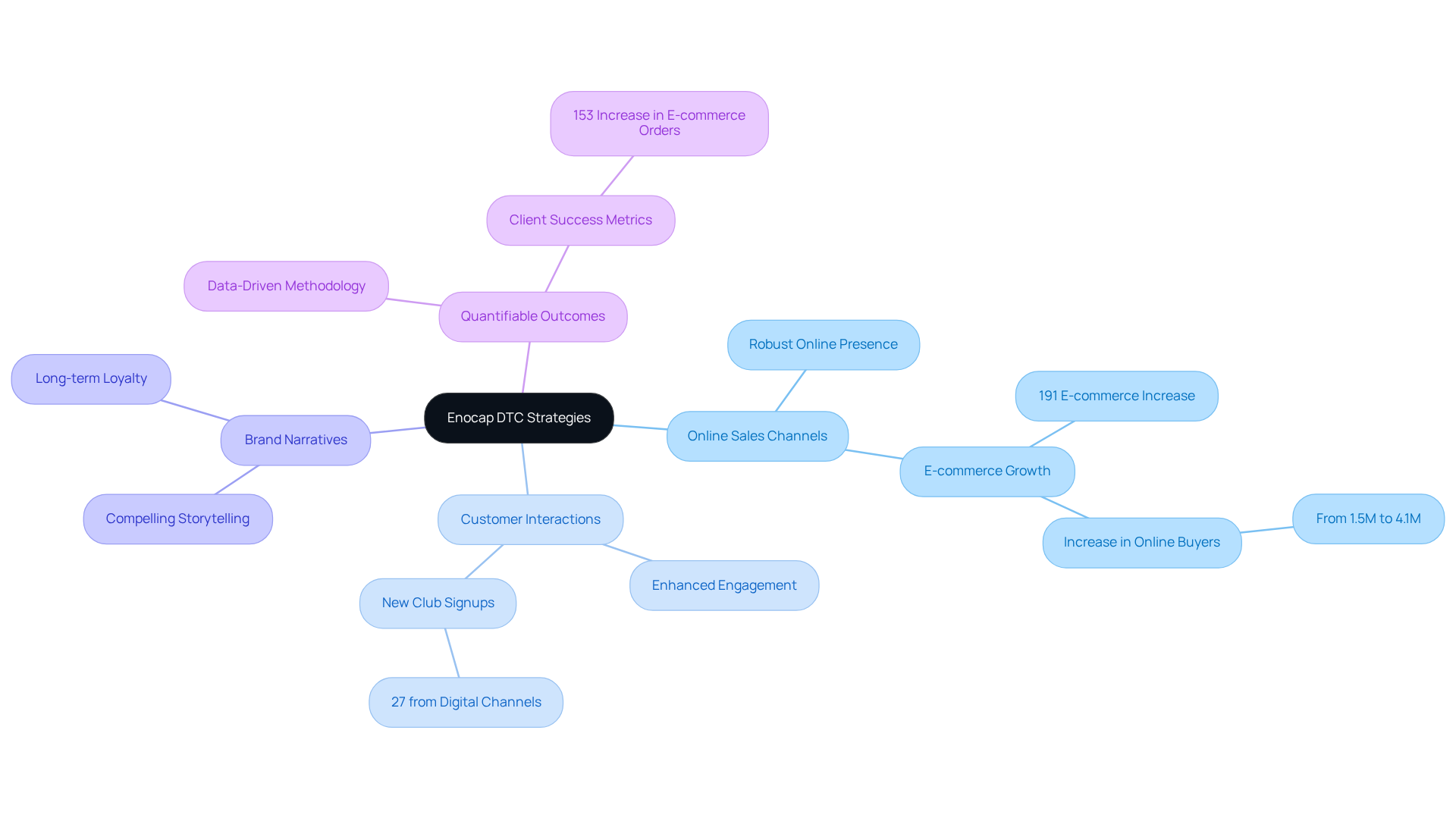
Wine Club Memberships: Boost Customer Loyalty and Engagement
Enhancing club memberships is fundamentally about crafting personalized experiences that forge strong connections with customers. This approach includes offering exclusive access to restricted launches, tailored beverage selections, and engaging communication strategies that tell the unique story of the vineyard. By leveraging data analytics, vineyards can tailor their offerings to match member preferences, significantly improving retention rates and encouraging referrals. A well-structured beverage club not only drives sales but also cultivates a vibrant community of loyal patrons, which is essential for family-owned vineyards aspiring to thrive for generations.
In fact, wine clubs contribute to 30% of total sales for American wineries, with members spending three times more than non-members. This underscores the financial advantages of effective engagement strategies. Furthermore, 76% of clients report that loyalty programs influence their purchasing decisions, while 59% of individuals believe that exclusive experiences enhance their brand loyalty. This data highlights the critical role personalized experiences play in fostering brand loyalty.
Wineries that adopt and flexible subscription options can significantly enhance customer satisfaction and retention, fostering enduring relationships that extend beyond individual purchases. Moreover, maintaining direct communication with customers is crucial for nurturing these connections, and addressing the operational challenges of managing a club is vital for improving its efficiency.
Strategic capital planning can further bolster these initiatives, ensuring that family-owned businesses possess the necessary resources to invest in their direct-to-consumer channels. Enocap is instrumental in this process, securing the essential capital for family-owned vineyards, enabling them to elevate their wine club offerings and cultivate long-term customer loyalty.

Instagram Marketing: Leverage Visual Storytelling to Engage Customers
Instagram serves as a powerful platform for vineyards, leveraging visual storytelling to showcase their products through captivating imagery and engaging narratives. By sharing behind-the-scenes glimpses, vineyard tours, and food pairing suggestions, wine producers can construct a compelling narrative that resonates with their audience. This strategy not only highlights the unique features of their brand but also fosters a deeper connection with customers. Engaging followers through interactive elements such as polls, questions, and user-generated content enhances interaction and cultivates a loyal community around the brand.
As Emanuele Trono, a Wine Digital Marketing Consultant, emphasizes, effective communication should reflect the winery's values, creating memorable connections with consumers. Furthermore, with 27% of new wine club registrations for Enocap's clients originating from digital channels, it is evident that online engagement strategies, particularly on Instagram, are crucial for acquiring and retaining clients. Wineries that adeptly utilize visual storytelling can incorporate wine marketing ideas alongside demand generation strategies and , leading to significant increases in customer engagement and loyalty, ultimately driving sales growth.
For instance, Cupcake Vineyards experienced a notable sales lift through its digital wine marketing ideas, highlighting the potential financial benefits of these strategies. Looking ahead to 2025, establishments that harness Instagram for visual storytelling are poised to distinguish themselves in a competitive market, connecting with diverse audiences through authentic and relatable content, and transforming casual buyers into devoted club members.
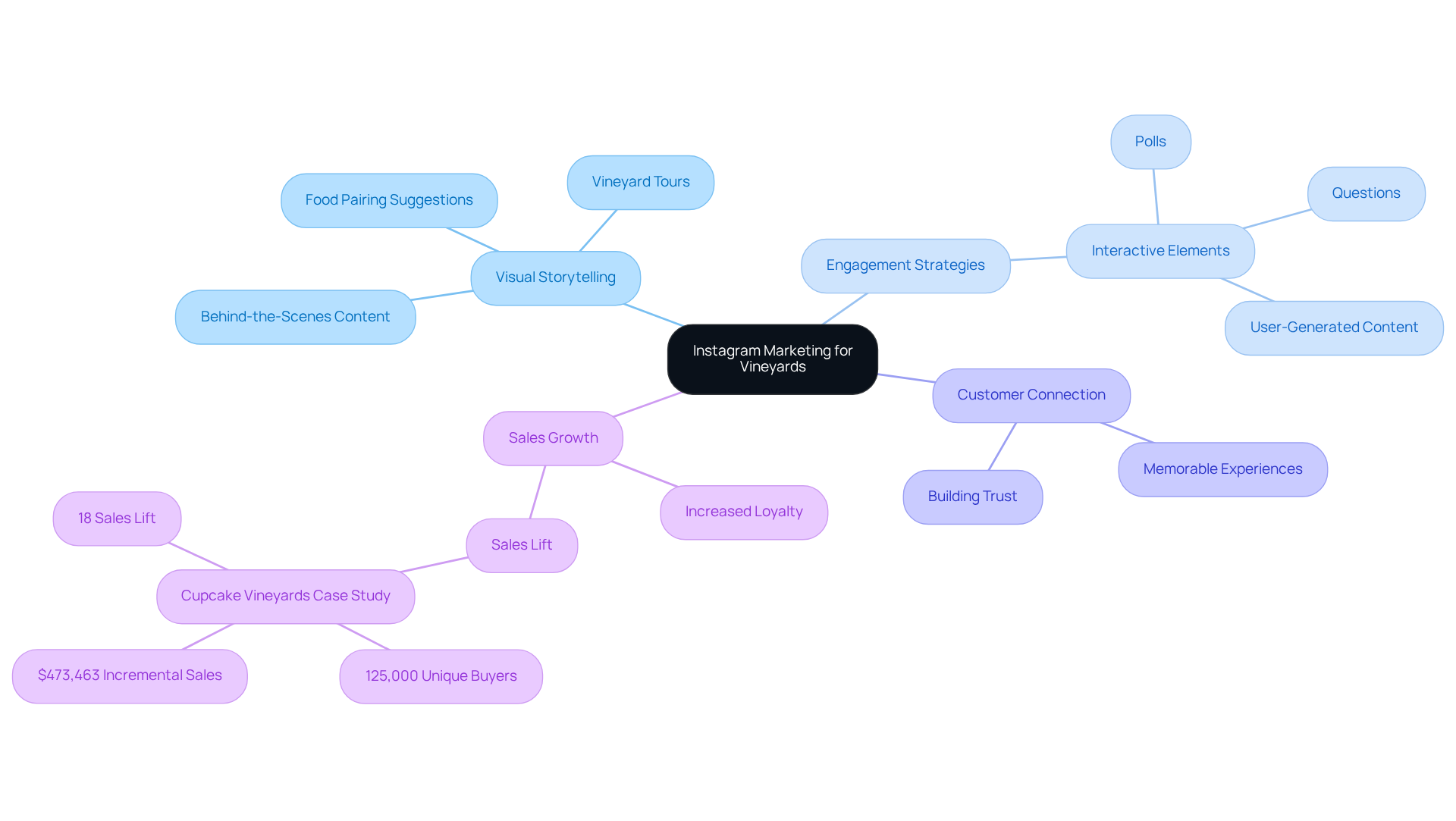
Virtual Tastings: Create Engaging Online Experiences for Wine Lovers
Virtual tastings provide vineyards with a unique opportunity to engage a wider audience and implement while delivering an interactive experience. By providing tasting kits to participants and guiding them through the tasting process online, producers can forge personal connections with consumers. This strategy not only enhances the tasting experience but also allows producers to share compelling narratives about their wines and the history of their vineyards, which is in perfect alignment with Enocap's commitment to brand storytelling.
Such storytelling enriches the event, making it memorable and fostering repeat purchases—an essential factor in converting casual buyers into loyal club members. Successful virtual tastings have demonstrated significant impacts on sales growth, serving as effective wine marketing ideas, with producers reporting increased customer loyalty and engagement.
Moreover, incorporating strategic capital planning into these initiatives can empower vineyards to secure the necessary resources for sustainable growth. Embracing these innovative online experiences is crucial for vineyards striving to excel in a competitive market.
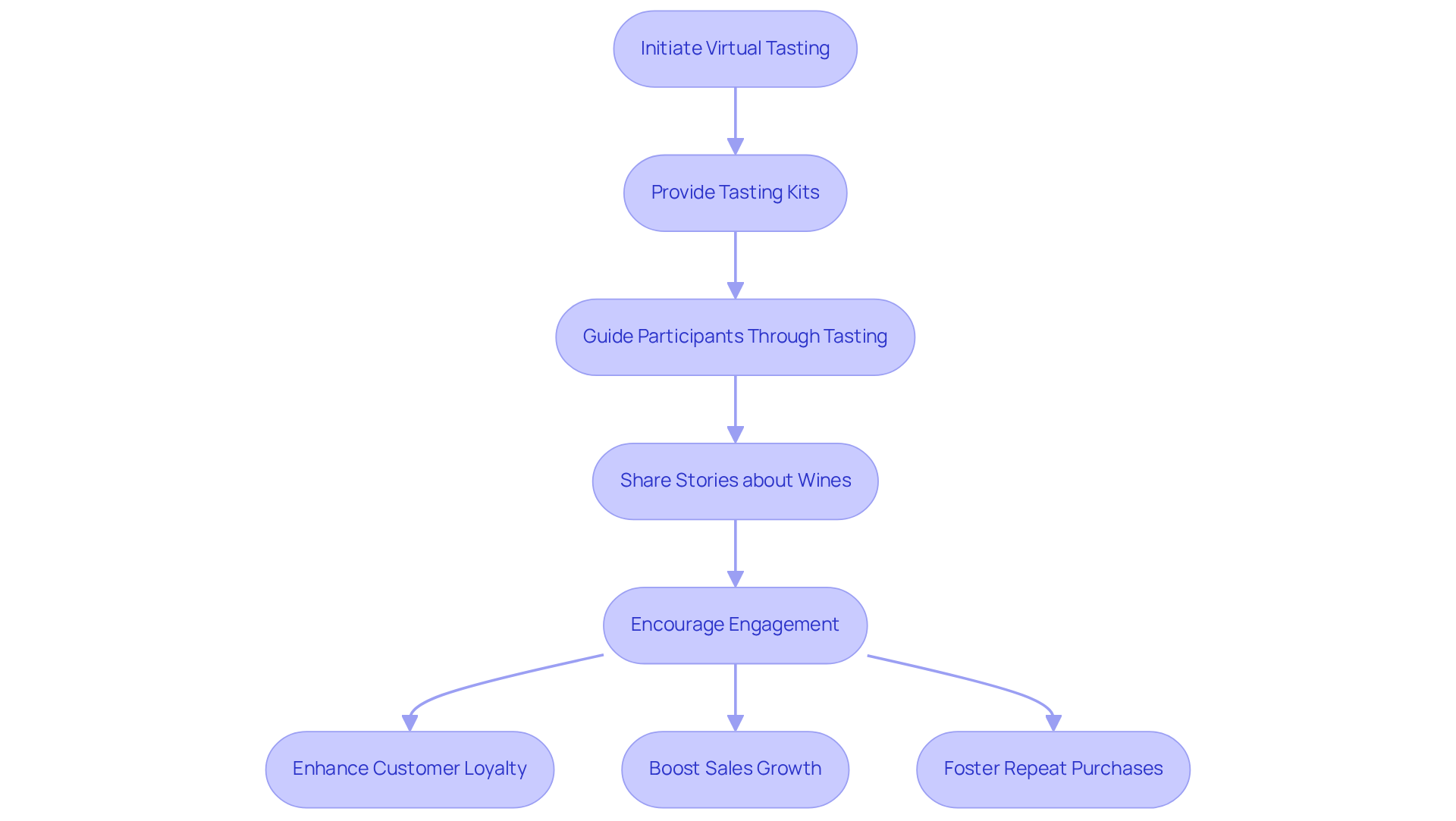
Influencer Partnerships: Expand Your Reach Through Authentic Collaborations
Collaborating with influencers who embody the brand values of the vineyard is essential for fostering authentic relationships with prospective clients and facilitating the evolution of family-owned vineyards. By leveraging the expansive platforms of influencers, wineries can effectively showcase their products using creative wine marketing ideas to a broader audience while crafting compelling brand narratives that resonate deeply with consumers.
Selecting influencers who possess a genuine appreciation for wine and can articulate the brand's story is crucial. This strategic partnership not only broadens reach but also cultivates loyalty among casual buyers, which aligns with our wine marketing ideas to .
Furthermore, integrating strategic capital planning into these collaborations can significantly enhance revenue growth and ensure sustainable success.
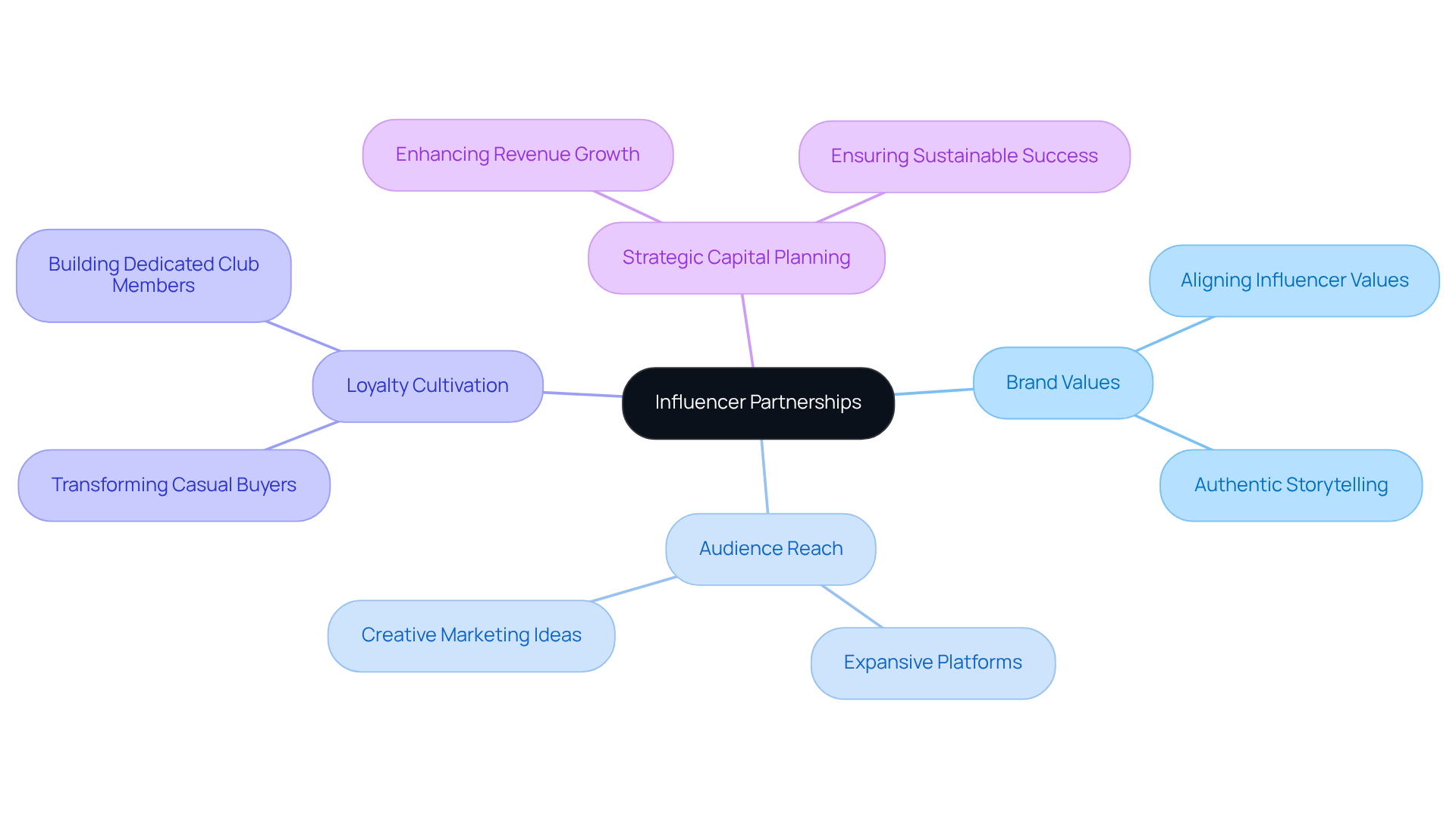
Email Marketing: Nurture Customer Relationships and Drive Sales
Successful email marketing relies on audience segmentation and the provision of personalized content that resonates with diverse client groups. By leveraging direct-to-consumer strategies, vineyards can implement wine marketing ideas to transform casual buyers into loyal club members through tailored messaging that narrates their unique brand story.
Sharing exclusive offers, upcoming events, and educational insights about wine marketing ideas not only enhances engagement but also nurtures client relationships, ultimately driving consistent growth. Regular communication that delivers genuine value encourages repeat purchases while fostering loyalty—an essential element for family-owned wineries striving for long-term success through effective wine marketing ideas and .
Notably, personalized emails yield a 14% higher click-through rate and over 26% open rates compared to non-personalized campaigns, underscoring the significance of tailored messaging. Current clients spend, on average, 31% more than new clients, highlighting the importance of cultivating these connections through customized wine marketing ideas.
Effective email campaigns, such as welcome series for new subscribers, showcase an impressive open rate of 86%, offering great wine marketing ideas to engage and convert prospects into devoted clients. Moreover, implementing wine marketing ideas through re-engagement campaigns can motivate inactive subscribers to reconnect with the establishment, further enhancing client retention.
By utilizing tools like ActiveCampaign and MailChimp, vineyards can effectively drive sales and build a loyal clientele, ensuring their thriving legacy for generations.

Sustainable Practices: Enhance Your Brand Through Eco-Friendly Initiatives
Implementing sustainable practices not only benefits the environment; it also resonates with a rapidly growing segment of eco-conscious consumers. Wineries have the opportunity to adopt impactful practices such as:
- Organic farming
- Waste reduction
- Eco-friendly packaging
By effectively conveying these wine marketing ideas through promotional channels, wine producers can significantly enhance their brand reputation. This approach not only attracts individuals who prioritize sustainability in their purchasing decisions but also positions wineries as leaders in within the industry.

Unique Wine Experiences: Host Themed Events to Attract New Customers
Organizing themed events—such as beverage and food pairings, seasonal festivities, or informative workshops—serves as compelling wine marketing ideas for attracting new clients and creating unforgettable experiences. These events not only enable wineries to showcase their products engagingly but also facilitate direct interactions with consumers, thereby .
For instance, successful beverage and food pairing events have proven effective in drawing new clientele, offering guests a unique opportunity to explore the nuances of drinks alongside culinary delights. Promoting these events through social media and email marketing is essential for wine marketing ideas, as 27% of new club signups originate from digital channels, underscoring the power of online outreach.
Moreover, incorporating themed elements can significantly influence customer acquisition, as immersive experiences resonate more profoundly with attendees, transforming casual visitors into loyal patrons. By leveraging storytelling and crafting an engaging narrative around each occasion, vineyards can amplify their appeal, turning each gathering into not merely a tasting but an unforgettable exploration of the beverage realm.
Furthermore, integrating strategic capital planning into these events can provide vineyards with insights on optimizing resources and maximizing returns, aligning with Enocap's transformative strategies focused on building sustainable direct-to-consumer channels that drive consistent growth and foster loyalty among wine enthusiasts.
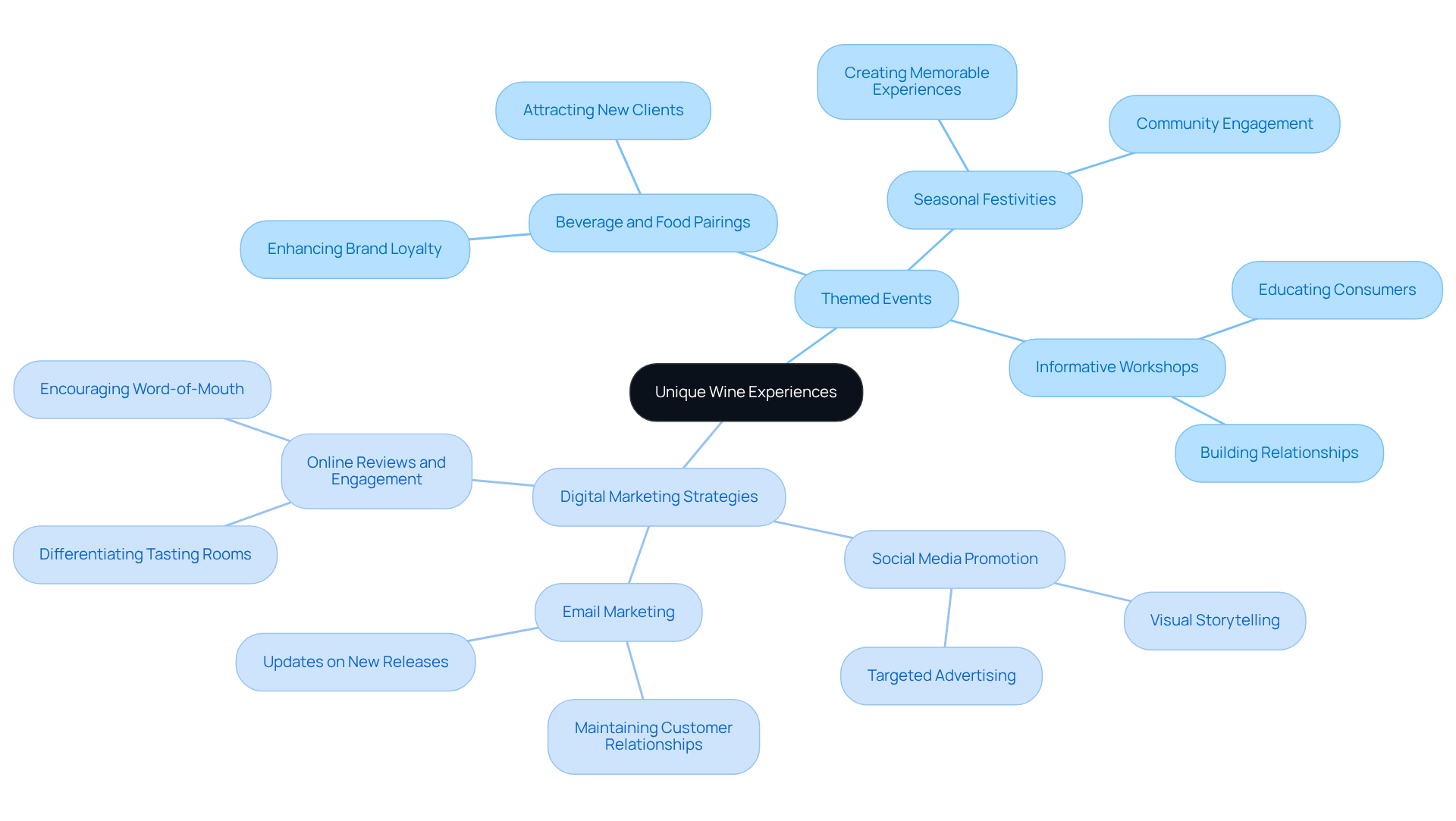
Data-Driven Marketing: Use Analytics to Tailor Your Strategies
Harnessing the power of data analytics empowers vineyards to uncover invaluable insights into customer preferences, purchasing behaviors, and emerging market trends. This information allows vineyards to refine their wine marketing ideas, making them more closely aligned with customer needs. Such enhancements may involve:
- Adjusting product offerings
- Optimizing pricing models
- Fine-tuning promotional campaigns based on effective wine marketing ideas to maximize effectiveness and drive sales
For instance, establishments that have embraced data-driven strategies reported remarkable outcomes, including an average e-commerce sales growth of 191% among clients in 2020 and a 153% increase in e-commerce order volume during market expansions.
Furthermore, as the beverage industry navigates shifting demographics and a decline in demand from traditional markets, the role of analytics becomes crucial for developing effective wine marketing ideas aimed at engaging younger audiences. The surge in online wine purchasers, from 1.5 million to 4.1 million, underscores the expanding market potential that producers can tap into through effective data utilization. By focusing on wine marketing ideas and compelling brand narratives, vineyards can foster stronger relationships with customers, ultimately leading to enhanced loyalty and sustained growth.
In addition, establishing sustainable direct-to-consumer channels can convert casual buyers into devoted club members, thereby improving customer retention. To successfully implement these , wine producers should invest in analytics tools that deliver actionable insights and routinely assess their marketing performance to adapt to evolving purchasing behaviors.
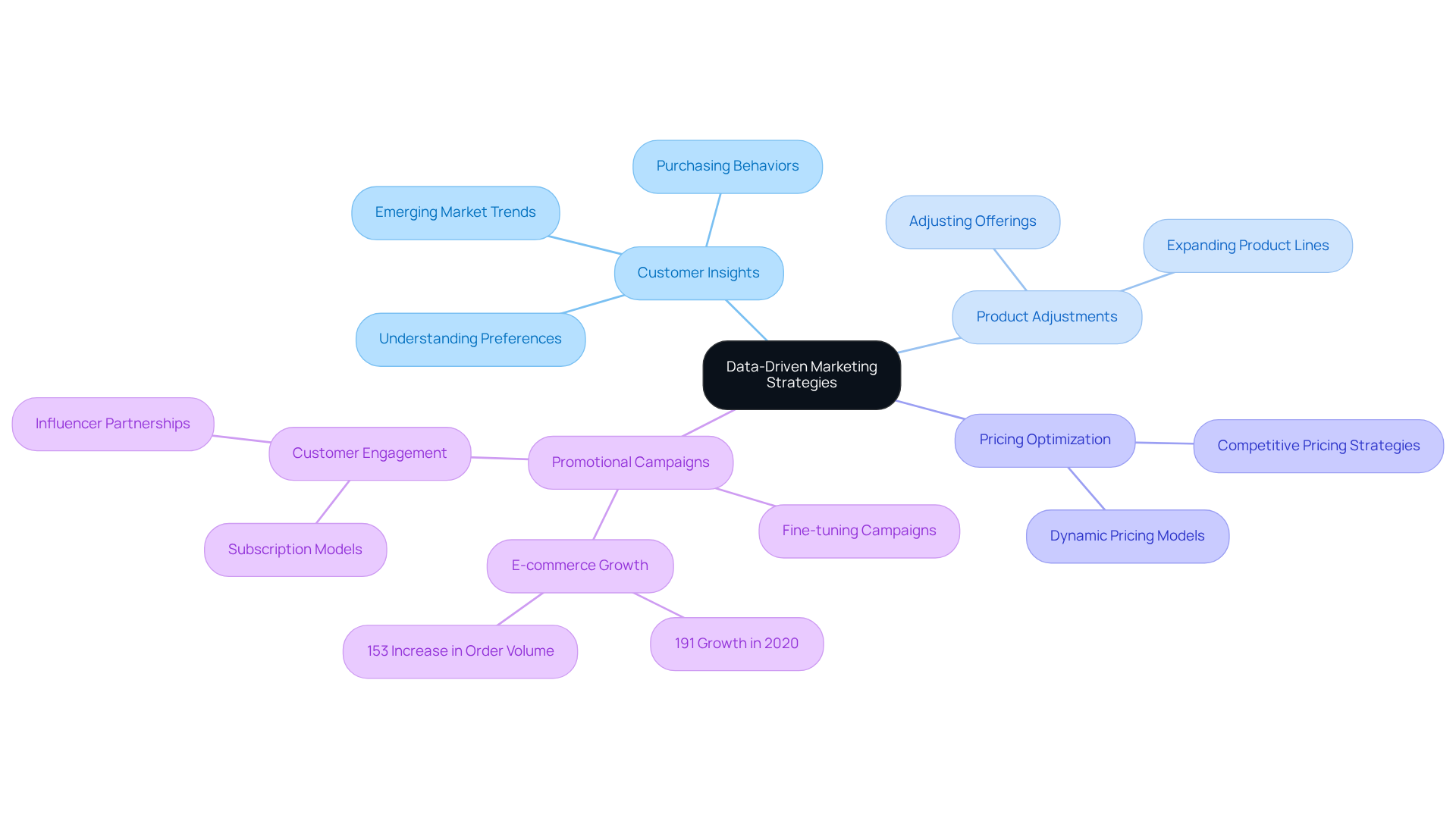
Compelling Storytelling: Connect Emotionally with Your Audience
Creating engaging stories that emphasize a vineyard's history, the complexities of the winemaking process, and the enthusiastic individuals behind the brand establishes profound emotional bonds with patrons. By effectively sharing these narratives through various wine marketing ideas, wine producers can engage their audience on a deeper level, fostering loyalty and encouraging word-of-mouth referrals.
Research indicates that consumers are 5% more likely to choose wines with winemaker stories and are willing to pay 6% more for them, underscoring the power of storytelling in influencing purchasing decisions. This approach not only strengthens brand identity but also utilizes to distinguish the establishment in a competitive market, making it essential for long-term success.
Furthermore, integrating strategic capital planning into these storytelling efforts can help family-owned wineries secure the necessary resources for sustainable growth. As noted by industry experts, authentic narratives resonate with consumers, creating a sense of inclusion and connection that is vital in today's wine landscape.

Conclusion
Empowering family-owned wineries to thrive in a competitive market necessitates innovative wine marketing strategies that resonate with consumers. By emphasizing direct-to-consumer (DTC) approaches, vineyards can forge meaningful connections with their clientele, ultimately driving sales and fostering loyalty. The integration of effective marketing ideas—from personalized wine club experiences to engaging storytelling—is essential for establishing a robust brand presence and ensuring sustainable growth.
Throughout this discussion, various strategies have been highlighted, underscoring the importance of leveraging digital channels, enhancing customer engagement through social media, and implementing data-driven marketing techniques. The significant impact of virtual tastings, influencer partnerships, and email marketing on customer retention and acquisition emphasizes the necessity for wineries to adapt and innovate continuously. Additionally, embracing sustainable practices and hosting unique wine experiences further enhances brand reputation and attracts eco-conscious consumers.
In a rapidly evolving market, wineries must prioritize these innovative approaches to not only capture attention but also cultivate lasting relationships with their audience. Embracing these strategies will elevate brand loyalty and position family-owned vineyards for long-term success. As the landscape of wine marketing continues to evolve, adopting these creative strategies will be critical in transforming casual buyers into devoted patrons, ensuring that the legacy of these wineries endures for generations to come.
Frequently Asked Questions
What is Enocap and what services does it provide to family-owned wineries?
Enocap specializes in crafting bespoke direct-to-consumer (DTC) strategies and effective wine marketing ideas, helping family-owned vineyards establish strong online sales channels, refine customer interactions, and enhance brand narratives to drive significant revenue growth.
What kind of results have Enocap's clients achieved?
In 2020, Enocap's clients experienced an average e-commerce increase of 191%, with the number of online beverage purchasers rising from 1.5 million to 4.1 million.
How important is a strong online presence for wineries?
A strong online presence is crucial, as 27% of new wine club signups come from digital channels. Enocap's strategies focus on immediate sales and long-term client retention through storytelling and customized programs.
How do wine club memberships enhance customer loyalty and engagement?
Wine club memberships create personalized experiences, such as exclusive access to launches and tailored selections, which help forge strong connections with customers, improving retention rates and encouraging referrals.
What financial impact do wine clubs have on American wineries?
Wine clubs account for 30% of total sales for American wineries, with members spending three times more than non-members, highlighting the financial benefits of effective engagement strategies.
What role does data analytics play in enhancing wine club memberships?
Data analytics allows vineyards to tailor their offerings to match member preferences, significantly improving retention rates and fostering brand loyalty.
How can wineries improve customer satisfaction and retention in wine clubs?
Wineries can enhance customer satisfaction by adopting tiered memberships, flexible subscription options, and maintaining direct communication with customers, while also addressing operational challenges in managing the club.
What is the significance of Instagram marketing for wineries?
Instagram is a powerful platform for wineries to leverage visual storytelling, showcase products, and engage customers through captivating imagery and narratives, which helps build a loyal community around the brand.
How can wineries utilize Instagram to drive sales growth?
By sharing engaging content such as behind-the-scenes glimpses and food pairing suggestions, wineries can connect with their audience, enhance customer engagement, and ultimately drive sales growth.
What are the future prospects for wineries using Instagram for marketing?
Wineries that effectively harness Instagram for visual storytelling are expected to stand out in a competitive market, connecting with diverse audiences and transforming casual buyers into devoted club members by 2025.




